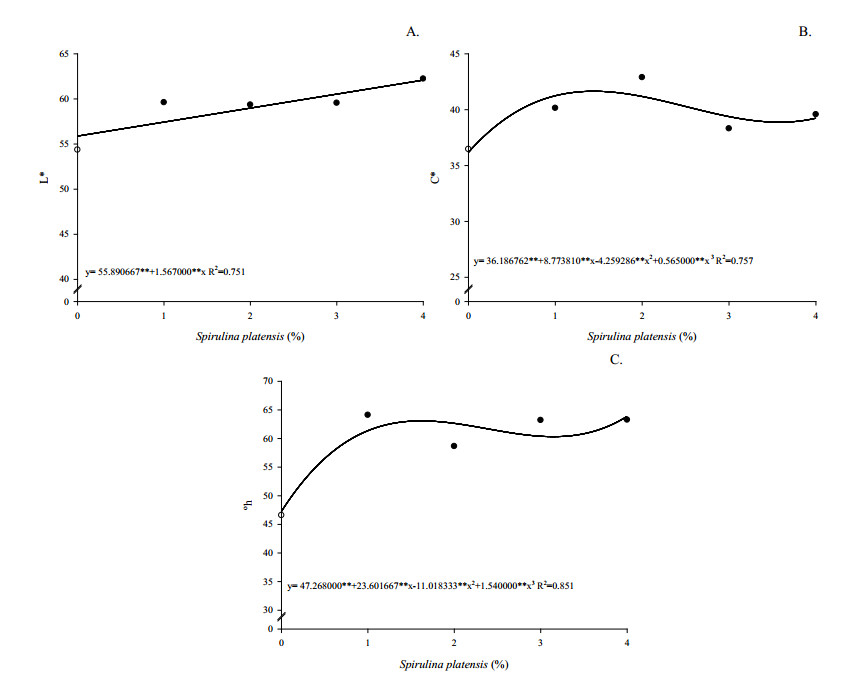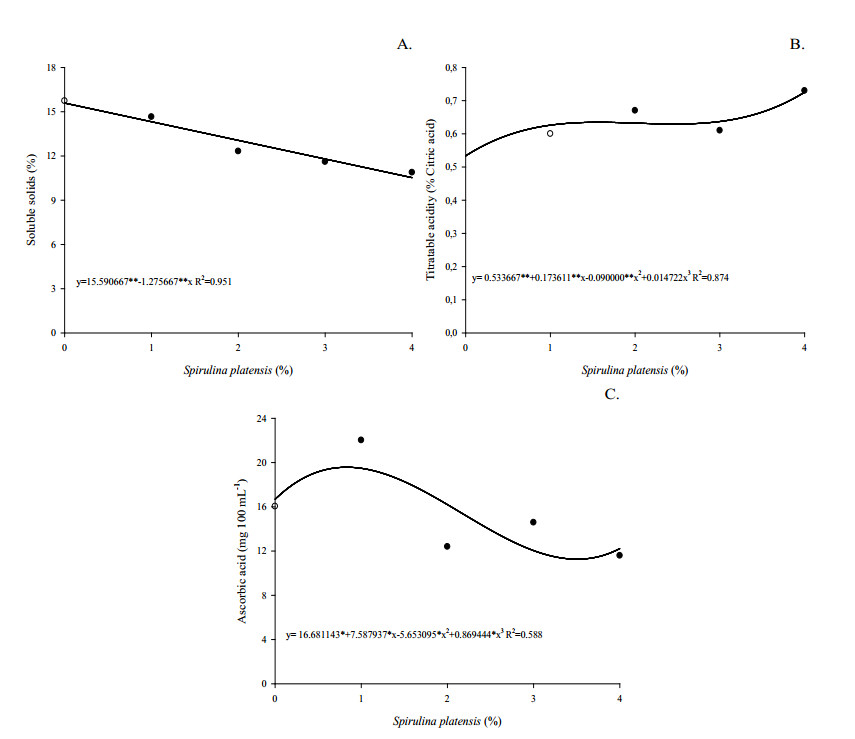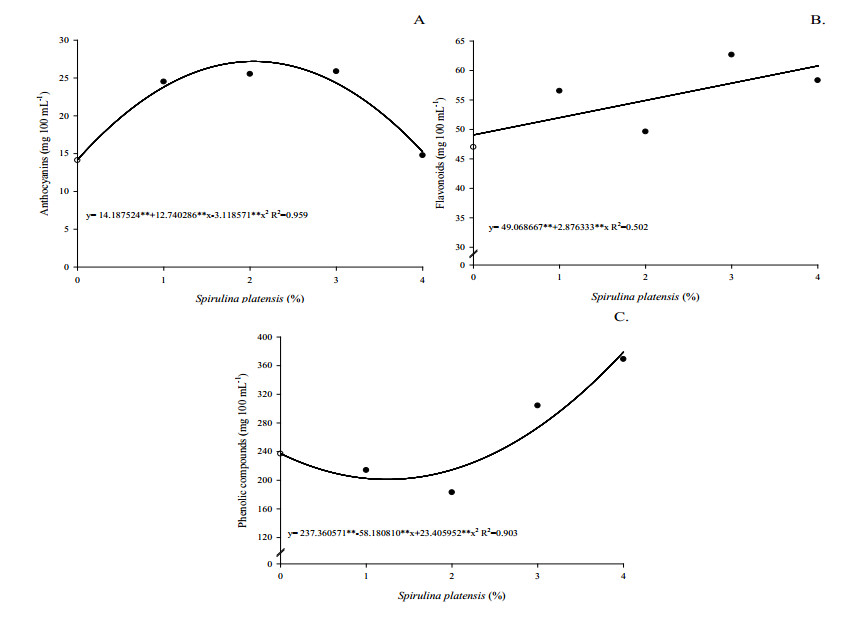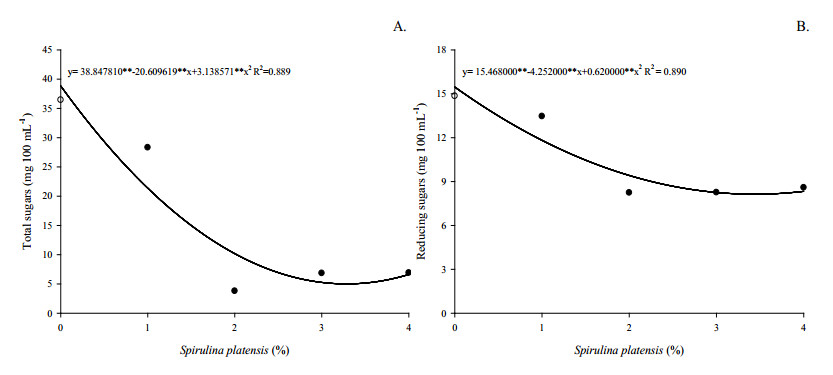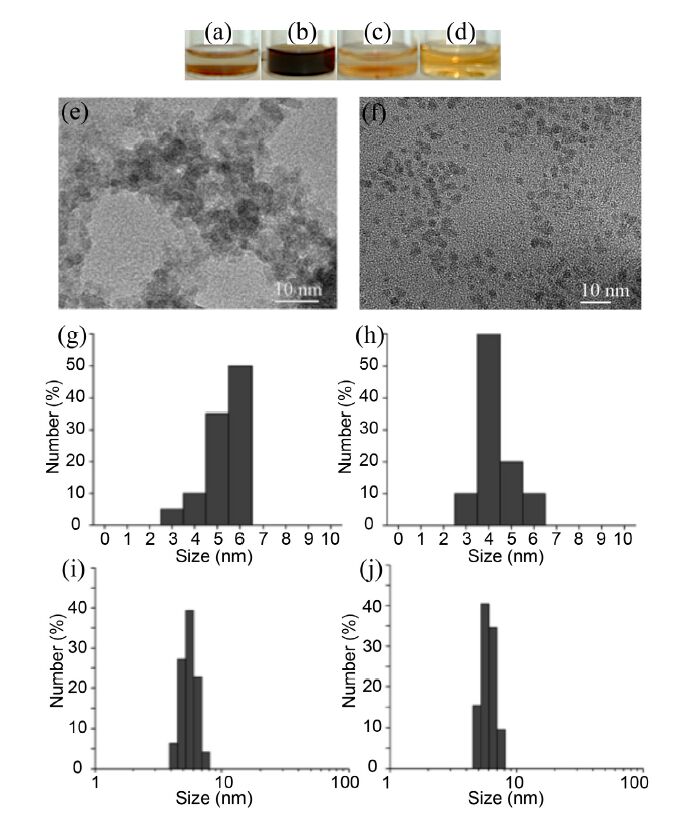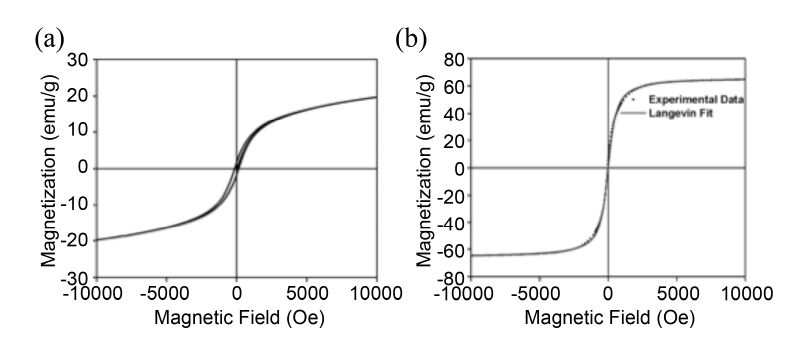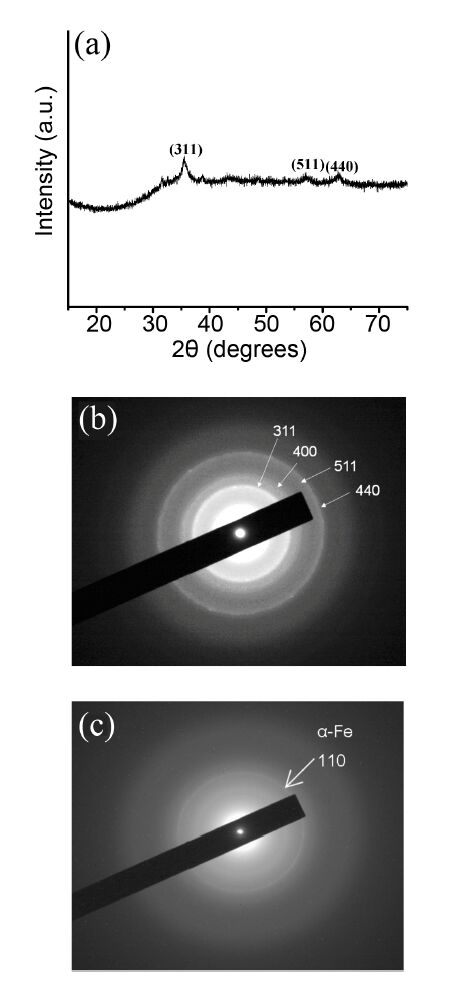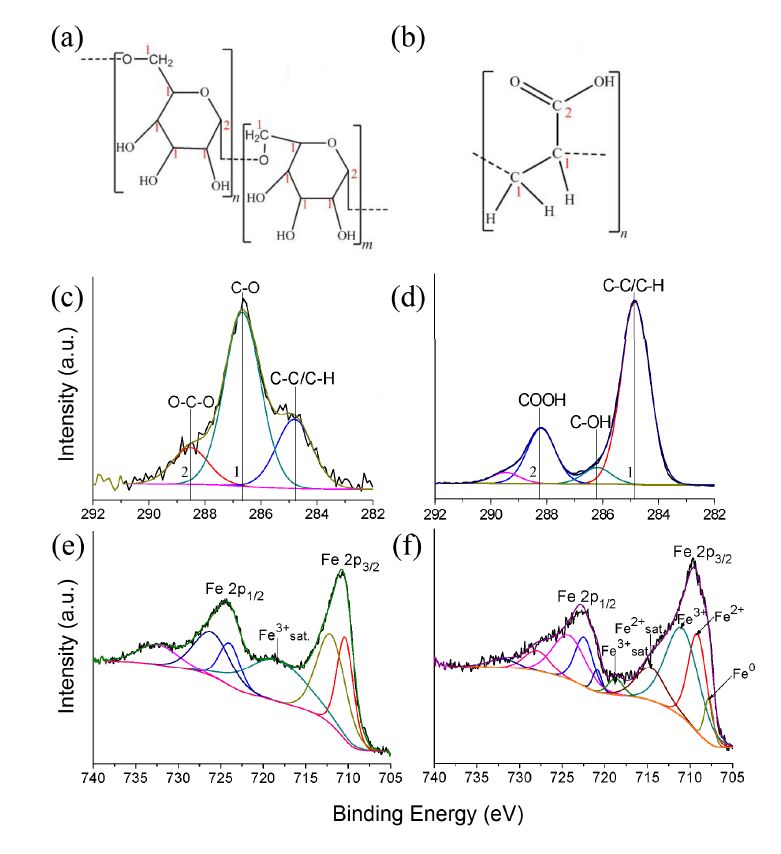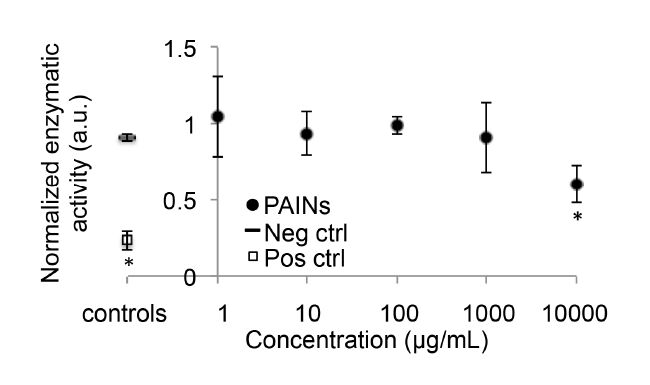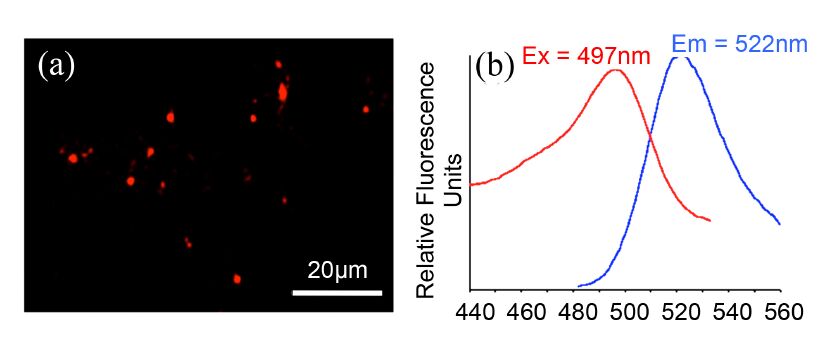Magnetic nanoparticles were coated with either dextran or polyacrylic acid (PAA), and compared as potential traceable carriers for targeted intraneuronal therapeutics. Nanoparticles were fabricated using a chemical reduction method and their number mean diameter, aggregation, surface chemistry, crystal structure and magnetic properties were characterized. The crystalline core of the dextran-coated nanoparticles was Fe3O4, while the PAA-coated sample had an iron core. The dextran-coated iron oxide nanoparticles (DIONs) and PAA-coated iron nanoparticles (PAINs) were both stable and had a similar mean diameter of less than 10 nm. However, morphologically, the PAINs were well dispersed, while the DIONs aggregated. DIONs exhibited the presence of hysteresis and ferromagnetic properties due to aggregation, while PAINs displayed superparamagnetic behavior. Surface chemistry analysis after 2 weeks of being exposed to air indicated that DIONs oxidized to Fe2O3, while PAINs were composed of a metallic Fe core and a mixed oxidation state shell. Based on these analyses, we concluded that PAINs are stronger candidates for examining axonal transport, since they were less prone to aggregation, offered a stronger magnetic signal, and were less oxidized. Neurotoxicity analysis of PAINs revealed that no significant toxicity was observed compared to negative controls for concentrations up to 1 mg/ml, thus further indicating their potential utility for biological applications. Finally, we successfully conjugated PAINs to a fluorophore, rhodamine 110 chloride, through a simple two-step reaction, demonstrating the feasibility of functionalizing PAINs. This study suggests that PAINs should be further evaluated as a candidate technology for intraneuronal diagnostics and therapy.
1.
Introduction
Pomegranate (Punicagranatum L.) produces a red-purple edible fruit with the taste ranging from sour to sweet. Its richness of phenolic and bioactive compounds aroused the interest of the food, pharmaceutical, and cosmetic industries, as well as the expansion of fresh fruit trade [1,2]. The non-climacteric feature of the fruit ensures a low respiratory rate at the end of maturation, which declines steadily until reaching senescence. Harvesting should occur when the fruit reaches full maturity, period with the best quality characteristics [3,4]. The commercial valuation and conquest of new markets require technologies for the preservation of fresh fruit.
The increasing consumer demand for natural or functional foods and concerns about environmental protection have fostered the development of alternatives for the process of preserving fresh foods. Among these alternatives, microalgae stand out due to their economic, ecological, and nutritional applicability promoted by substances synthesized by these organisms, which are useful to pharmaceutical, cosmetic, and food industries [5].
Among the microalgae, Spirulina platensis produces essential nutrients, such as vitamins (A, B2, B6, B12, E, and D), proteins (up to 70% of dry mass), minerals (calcium, phosphorus, potassium, and lipids), antioxidants (beta carotene), and carbohydrates [6]. Spirulina has several agronomic applications [7,8,9,10], which have been studied in new research lines, such as development of structural biofilms for fruit coating during postharvest [11,12].
The use of green technologies in pomegranate post-harvest conservation may allow expanding commercialization for long-distance markets. In this context, this study aims to evaluate S. platensis-based coatings on pomegranate postharvest characteristics.
2.
Materials and methods
Pomegranates of the cultivar ‘Comum’ were grown in Petrolina, Pernambuco. The fruits were harvested manually at commercial maturation stage and packed in internally lined plastic boxes. The boxes were transported to the Food Analysis Laboratory of the Federal University of Campina Grande, Pombal, Paraíba, where occurred the selection of pomegranates for uniformity of size, color, and absence of defects. The fruits were washed with 1% neutral detergent solution, rinsed, sanitized with sodium hypochlorite solution at 100 ppm chlorine for 15 minutes, and rinsed again under running water.
After outdoor drying, the fruits were randomly distributed in batches to apply the treatments. The treatments comprised four different suspensions based on Spirulina platensis powder (1, 2, 3, and 4%) of the Tamanduá brand and one control (0%). Mineral oil at 0.5 ml L-1 was added in each treatment. The experiment had a completely randomized design with three replications and two fruits per replicate. Pomegranates were kept at 24 ℃ (room temperature) and 60% RH, and evaluated after 15 days of storage.
Treatment solutions were prepared by weighing the respective amounts of S. platensis powder in a semi-analytical balance and dissolving them in 10 L of water. The treatments were applied by dipping the fruits in the suspensions. After treatment, the fruits were arranged in perforated plastic containers to drain the excess of suspension. Finally, the pomegranates were stored in a chamber with temperature and relative humidity control. After storage, fruit peel placement was evaluated:
Fruit colorimetry: Peel color was measured by reflectometry using a colorimeter (Konica Minolta, Chroma Meter CR-400). The values of L*, a*, and b* allowed the calculation of angle hue (°h) and chroma saturation index (C*) from the following equations: °h = arctan (a*/b*)(-1) + 90 when a* is negative, °h = 9 – arctan (a*/b*) when a* is positive, and C* = [(a*)2 + (b*)2]1/2). The calibration of the equipment was performed with a standard white plate, following the manufacturer’s instructions.
After storage, the juice was extracted by manual maceration of arils in plastic bags to analyze the following fruit quality variables:
Soluble solids:Direct reading in a portable digital refractometer [13] with results expressed in percentages.
Titratable acidity (TA): Measured in triplicate using 1 mL of juice added to 50 mL of distilled water and two drops of 1% alcohol phenolphthalein. Then, titration with NaOH solution at 0.1 M was performed until the color changed to light pink. Values were expressed as percent citric acid [14].
Potential of Hydrogen (pH): Gauged using a benchtop digital pH meter (Digimed DM-22) according to [14].
Ascorbic acid: Estimated in triplicate using 1 mL of juice diluted in 49 mL of oxalic acid. Subsequently, titration with Tillman’s solution was performed. Results were expressed as mg of ascorbic acid per 100 grams of juice [14].
Total phenolic compounds: Measured by the Folin-Ciocalteau method as described by [15] with modifications. We prepared the extracts diluting 0.1 mL of pomegranate juice in 100 mL of distilled water and letting the solution stand for one hour. An aliquot of 2.125 μL of the extract was transferred to a test tube, and 125 μL of Folin-Ciocalteau reagent was added. We kept the mixture stand for 5 minutes, and then added 250 μL of 20% sodium carbonate. The solution was stirred and put in a water bath at 40 ℃ for 30 minutes. Readings were taken in a spectrophotometer at 765 nm, and the results were expressed in mg 100 mL-1.
Total anthocyanins: were determined according to the methodology of [16]. One milliliter of the homogenized pomegranate juice was transferred to an aluminum foil coated test tube, adding about 10.0 mL of 95% ethanol extracting solution and HCl at 1.5 N. The readings were carried out in a spectrophotometer at 535 nm. Results were expressed in mg 100 mL-1.
Flavonoids: Determined similarly to anthocyanins, changing only the wavelength in the spectrophotometer to 374 nm [16].
Total Sugars: One milliliter of juice was diluted with 100 mL distilled water, from which 500 µL was removed and diluted again with 50 mL distilled water. From this dilution, 1.0 mL was used for dosing through the anthrone method, according to [17]. Results were expressed in mg 100 mL-1.
Reducing sugars: Two hundred microliters of juice was diluted in 100 mL of distilled water. We removed 1.5 mL aliquots of the solution to which 1 mL of the Dinitrosalicylic acid (DNS) solution was added, followed by homogenization according to [18]. Results were expressed in mg 100 mL-1.
Data were assessed through the analysis of variance and regression from the means of each treatment. We use the software SISVAR version 5.6 [19].
3.
Results and discussion
Pomegranates can be harvested when they reach a certain size and skin color and according to their titratable acidity (TA) and soluble solids content. Thus, with the luminosity results (L*) 64.70, angle hue 62.00 being equivalent to orange peel, acidity values of 0.71 and soluble solids of 10.94, we consider that ‘Common’ pomegranate fruits were ripe on the day of harvest, that is, at the beginning of storage for this study.
Table 1 describes the initial characterization of pomegranate fruits at harvest; that is, it demonstrates the quality characteristics the fruits had on the first day of the experiment.
The variables luminosity (L*), hue color angle (°h), chromaticity (C*), soluble solids, titratable acidity, ascorbic acid, phenolic compounds, anthocyanins, flavonoids, total soluble sugars, and reducing sugars differed significantly among the concentrations of Spirulina platensis in the coatings. However, external and internal appearance and pH did not change among the coatings (Table 2).
The S. platensis coatings with the mineral oil significantly interfered on the luminosity (L*) of the fruits, consequently the control fruits were more opaque and less bright than the coated fruits (Figure 1A). The reduction in brightness changes of the coated pomegranates refers to the layer formed by the coating, which provided a shiny appearance on the surface of the fruit.
The coated fruits had higher values of color saturation (C*) compared to the control. Concentrations 1 and 2% (41.43 and 41.15) showed the highest intensity of the color (Figure 1B).
The hue color angle (°h) showed little variation with S. platensis coatings, ranging from 62.72 to 63.80, which corresponds to orange-yellow peels. However, uncoated fruits at the end of storage showed a reddish-orange color, suggesting a more advanced ripening stage (Figure 1C).
Uncoated and 1% coated fruits do not maintain soluble solids content, but show a greater increase than the rest of the treatments, respectively 15.73% and 14.66% (Figure 2A). However, with increasing doses of S. platensis, there was a reduction in soluble solids, indicating loss of sugar during the pomegranates storage, probably due to decomposition processes and small variations in the maturation stages of fruits during the harvest. Preservation of other fruits, such as guavas, with coatings based on S. platensis also reduced soluble solids contents over the storage period [10].
Titratable acidity presented higher values as the dose of Spirulina was higher. Control fruits had the lowest values over the storage period (Figure 2B). The increase in acidity with the reduction of soluble solids proves that the coatings delayed fruit ripening. This process also happens in other microalgae-coated fruits, such as bananas [12].
The ascorbic acid content increased in fruits with or without coating comparing to the initial characterization (Table 1). However, the concentration of 1% S. platensis obtained the highest value of this acid (22.02 mg 100 mL-1), demonstrating the maintenance of the organic acids in the fruit and consequently the delay in senescence (Figure 2C). Ascorbic acid retention in S. platensis-coated pomegranates may be explained by the low oxygen penetration, which led to inhibition of enzymatic activity and, consequently, to reduced oxidation [20]. The ascorbic acid content in pomegranates naturally increases during ripening [3].
The content of anthocyanins in fruits remained constant from concentration 1 to 3%, with values between 24.71 and 27.08 mg 100 mL-1, but the control and 4% coating had the lowest contents, approximately 14.22 and 15.36 mg 100 mL-1 (Figure 3A). In pomegranates ‘Wonderful’, anthocyanin levels increase over the ripening, producing a purple-red juice that is very attractive to consumers [3]. The anthocyanin content was preserved in pomegranates coated with S. platensis, while the reduction in anthocyanin in the control fruits may reveal the presence of oxidative enzymes [21].
The uncoated fruits had the lowest flavonoid content (48.99 mg 100 mL-1). The coatings attenuated the loss of this compound, maintaining the high values (Figure 3B). The internal and external stress stimuli on fruits lead to increase in flavonoids during the beginning of storage, to cope with the sudden change in the environment, and then a decrease, with substantial consumption of these compounds [22]. Therefore, coating with S. platensis may have protected the pomegranates from exposure to stress stimuli. Chitosan-coated apples mixed with olive residues leaf extract and milk bagasse extract also maintain the flavonoid contents [23].
The fruits with 3 and 4% coating preserved the contents of phenolic compound when compared with the other coats and the control (Figure 3C). The content of phenolic compounds decreases in pomegranate fruits during ripening [1]. The 3% and 4% coatings worked as protective barriers on the fruit surface to reduce oxygen supply. Probably the decline in coated fruit 1 and 2% and the increase at 3 and 4% during storage reflects small variations in fruit ripening stages at harvest. These variations are imperceptible, considering the size and color criteria adopted for fruit harvesting [24].
Sugar contents (total and reducing) remained in the coatings of 2%, 3%, and 4% S. platensis, probably due to the reduction in fruit metabolism and the consequent low respiratory rate. However, fruits coated with 1% maintained the total and reducing sugars values compared to control (Figure 4). The variations in total and reducing sugars corroborated the soluble solids content, in which the fruits with the highest concentrations tended to decrease in values.
The delay of total and reducing sugar content in fruits coated with S. platensis may be caused by the slow metabolic activities of pomegranates, which is generated by controlled gas exchange. Studies also report a slow increase in sugars with the use of microalgae-based coatings over the storage period in tropical fruits such as bananas and papaya [12,25].
4.
Conclusions
The coating with 2% Spirulina platensis slows down the development of color, increases brightness, reduces astringency, and maintains the sugar and ascorbic acid content of pomegranate fruits.
Acknowledgments
We thank the ConselhoNacional de DesenvolvimentoCientífico e Tecnológico(CNPq) for the financial support for the development of the study.
Conflict of interest
All authors declare no conflicts of interest in this paper.









 DownLoad:
DownLoad:
